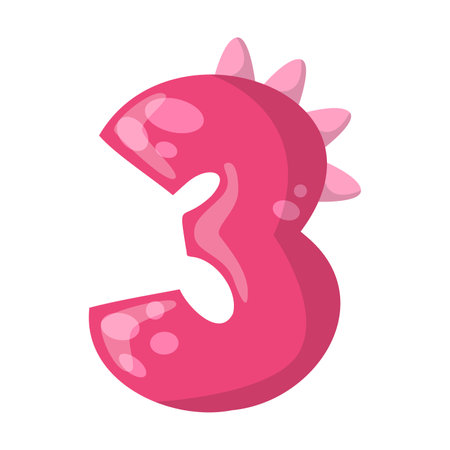1. Understanding Lucid Dreams in American Culture
What Are Lucid Dreams?
Lucid dreaming happens when you realize you are dreaming while still inside the dream. This awareness gives you a special chance to control what happens, explore your imagination, and even solve problems. Many Americans find lucid dreams exciting because they combine creativity, self-discovery, and adventure all in one experience.
A Brief History of Lucid Dreaming
While the idea of lucid dreaming has ancient roots, it became especially popular in America during the late 20th century. Psychologists like Dr. Stephen LaBerge brought scientific attention to lucid dreams in the 1970s and 1980s. Since then, books, movies, and TV shows have made lucid dreaming a familiar concept for many people across the United States.
Lucid Dreams in American Pop Culture
| Media Type | Example | Description |
|---|---|---|
| Movie | Inception | A blockbuster film exploring dreams within dreams and controlling dream worlds. |
| TV Show | The Simpsons | Episodes where characters realize they are dreaming and change their dream reality. |
| Book | Exploring the World of Lucid Dreaming | A best-selling guide by Stephen LaBerge that inspired many Americans to try lucid dreaming. |
The Psychological Significance of Lucid Dreaming
In psychology, lucid dreaming is often seen as a way to boost self-awareness and creativity. Therapists might encourage lucid dreaming to help people overcome nightmares or practice new skills in a safe space. Many self-help movements in America highlight lucid dreaming as a tool for personal growth, encouraging people to explore their subconscious minds.
Why Americans Are Drawn to Lucid Dreaming
- Self-Discovery: It’s a way to better understand yourself.
- Problem Solving: You can practice real-life challenges inside your dreams.
- Creativity: Artists and writers use lucid dreams for inspiration.
- Adventure: Experience anything you want without limits.
- Anxiety Relief: Gain control over recurring nightmares or stressful dreams.
Lucid dreaming continues to be an exciting topic in American culture. Its blend of science, art, and personal development makes it popular among people seeking new ways to understand themselves and expand their minds.
2. Developing Self-Awareness through Lucid Dreaming
Recognizing Dream States: Key Techniques for Americans
Lucid dreaming starts with realizing you are dreaming while still inside the dream. This awareness can be a powerful tool for self-discovery and growth, especially in a fast-paced American lifestyle. Here are some simple techniques to help recognize dream states:
| Technique | Description | How It Helps Americans |
|---|---|---|
| Reality Checks | Throughout the day, ask yourself, “Am I dreaming?” Try actions like pushing your finger through your palm or reading text twice. | Keeps you mindful and helps develop a habit of questioning reality—useful for busy lives. |
| Dream Journaling | Write down your dreams as soon as you wake up, even if only fragments. | Boosts dream recall and highlights recurring themes related to personal challenges or ambitions. |
| Meditation and Mindfulness | Spend 5–10 minutes daily focusing on your breath or present moment awareness. | Cultivates mental clarity that makes lucid dreaming more accessible, even with a packed schedule. |
| MILD Technique (Mnemonic Induction of Lucid Dreams) | Before sleeping, repeat to yourself: “Next time Im dreaming, I will remember Im dreaming.” | Strengthens intention, which is crucial for those juggling multiple responsibilities. |
The Power of Lucid Dreams for Personal Growth
Lucid dreams let Americans safely explore their inner world without outside judgment or consequences. By becoming aware during dreams, you can face fears, rehearse real-life situations (like giving a presentation at work), or simply reflect on your true desires. This unique state provides space to experiment with new perspectives and attitudes.
Self-Understanding in Everyday Life
Americans often strive for self-improvement and personal success. Lucid dreaming can support this by shining a light on hidden beliefs or emotions that influence daily choices. For example, noticing repeated stress dreams might reveal workplace anxieties. Through lucid awareness, you can confront these feelings in the dream, leading to real-life confidence and resilience.
Practical Steps for Self-Awareness:
- Set Intentions Before Sleep: Decide what you want to learn or experience in your lucid dream—whether its overcoming a fear or understanding a relationship dynamic.
- Reflect on Dream Insights: After waking, take a few moments to consider what the dream taught you about yourself. Ask how it relates to your goals or challenges as an American navigating work, family, or social life.
- Apply Lessons to Waking Life: Use insights from your dreams to make small changes in habits or attitudes. Even minor shifts can lead to significant personal growth over time.
This approach makes lucid dreaming not just an escape but a practical tool for better self-awareness and positive change within the context of American life.

3. Unlocking Creativity with Lucid Dreaming
How Lucid Dreams Spark Innovation
Lucid dreaming is more than just an exciting nighttime adventure—it’s a powerful tool for creativity and innovation, especially in American culture where fresh ideas and problem-solving are highly valued. When you’re aware that you’re dreaming, your mind can freely explore new concepts without the limits of everyday logic. This dream state often leads to unique solutions, artistic breakthroughs, and creative insights that are hard to access during waking hours.
Benefits for Artists, Entrepreneurs, and Everyday People
Whether you’re an artist seeking inspiration for your next piece, an entrepreneur looking to develop a groundbreaking product, or simply someone wanting to solve daily challenges more creatively, lucid dreaming can help. The dream world removes boundaries and lets you experiment with ideas in ways that might feel impossible in real life.
Examples of How Lucid Dreaming Can Boost Creativity
| Who Can Benefit? | How Lucid Dreams Help | Real-Life Applications |
|---|---|---|
| Artists & Musicians | Create new visuals and sounds without restrictions | Painters visualizing original artwork; musicians composing melodies |
| Entrepreneurs & Innovators | Test out business ideas in risk-free scenarios | Imagining how customers react to a new product or service |
| Everyday Problem Solvers | Work through personal issues or brainstorm solutions | Finding creative ways to manage stress, relationships, or finances |
Tapping into the American Spirit of Innovation
The United States is known for its emphasis on self-improvement and innovation. Lucid dreaming fits perfectly within this mindset by giving individuals the chance to unlock their full creative potential. Many Americans who practice lucid dreaming report increased confidence in tackling problems and a greater sense of self-awareness.
Tips for Using Lucid Dreams to Boost Your Creativity:
- Set an Intention Before Sleep: Think about a creative challenge or idea you want to work on while dreaming.
- Keep a Dream Journal: Write down your dreams as soon as you wake up—this helps capture fresh ideas before they fade away.
- Practice Mindfulness: Being present during your day can make it easier to recognize when you’re dreaming at night.
- Share Your Experiences: Talk about your dreams with friends or colleagues—you might spark even more creative ideas together!
If you’re looking for a way to tap into your imagination, try exploring lucid dreaming. You might be surprised by the innovative solutions and creative sparks waiting for you each night.
4. Consciousness Expansion: Personal and Societal Benefits
How Lucid Dreaming Expands Our Minds
Lucid dreaming, or being aware that you are dreaming while still in the dream, isnt just a fun experience—it can actually help us grow as individuals and even improve society as a whole. Many Americans are exploring lucid dreaming to boost creativity, increase self-awareness, and gain new insights about themselves and others.
Broadened Perspectives Through Lucid Dreams
When we realize were dreaming, we can take control of our dreams and try things we might never do in real life. This freedom lets us see problems from different angles and practice empathy by stepping into someone else’s shoes—even if only in our minds. For example:
| Lucid Dream Experience | Personal Benefit | Societal Impact |
|---|---|---|
| Solving a conflict with a dream character | Improved conflict resolution skills | Better teamwork at work or school |
| Experiencing life as someone else (different age/gender/race) | Greater empathy and understanding | Reduced prejudice and better community relationships |
| Exploring creative ideas without limits | Boosted creativity and innovation | New solutions for social or business challenges |
The Role of Empathy in Social Awareness
Lucid dreams allow us to experiment with emotions, reactions, and choices in a safe space. By facing fears or connecting with others in our dreams, we become more understanding and patient when dealing with people in the real world. This can help build stronger friendships, families, and communities.
Individual Well-Being Leads to Collective Growth
The personal benefits of lucid dreaming—like reduced anxiety, better problem-solving skills, and higher creativity—add up across society. As more people use lucid dreaming for self-discovery and healing, the positive effects ripple outward. Imagine workplaces where employees solve conflicts peacefully or schools where students support each other because they’ve learned empathy in their dreams.
5. Practical Tips for Americans to Harness Lucid Dreaming
Kickstarting Your Lucid Dreaming Journey
Lucid dreaming might sound mystical, but it’s a learnable skill that anyone in the U.S. can explore for personal growth and creativity. Here are some practical, American-friendly steps to help you get started:
1. Build a Consistent Sleep Routine
Americans often have busy schedules, but consistency is key. Try to go to bed and wake up at the same times every day—even on weekends. This helps regulate your circadian rhythm and makes lucid dreams more likely.
2. Start a Dream Journal
Keep a notebook or an app by your bedside to jot down your dreams as soon as you wake up. The more you remember your dreams, the easier it becomes to recognize when you’re dreaming. Here’s a simple way to organize your journal:
| Date | Main Dream Themes | Emotions Felt |
|---|---|---|
| 06/15/2024 | At work, flying over city | Anxious, excited |
| 06/16/2024 | Back in college, talking with friends | Nostalgic, happy |
3. Practice Reality Checks Throughout the Day
This habit helps you question whether you’re awake or dreaming. Common reality checks include:
- Pushing your finger into the palm of your other hand (in dreams, it may pass through!)
- Reading text or checking digital clocks twice—text often changes in dreams
- Pinching your nose and seeing if you can still breathe through it
4. Use American-Friendly Resources and Communities
The U.S. has plenty of resources to support lucid dreamers. Try these:
- Reddit communities like r/LucidDreaming
- Apps such as Lucidity or Awoken (available on iOS and Android)
- YouTube channels run by American lucid dreamers, for step-by-step guides and support
- Books like “Exploring the World of Lucid Dreaming” by Stephen LaBerge (widely available in U.S. bookstores and libraries)
5. Mindfulness and Meditation Practices Adapted for Americans
You don’t need to be a meditation expert—start with short, guided mindfulness exercises using free apps like Insight Timer or Calm. Even five minutes daily can improve self-awareness, which is crucial for lucid dreaming.
Quick-Start Checklist for American Lucid Dreamers:
| Step | Description |
|---|---|
| Create a Sleep Schedule | Aim for 7-9 hours of sleep nightly; set consistent times. |
| Dream Journal Every Morning | Write down whatever you remember upon waking. |
| Daily Reality Checks | Add them to existing habits (e.g., while checking your phone). |
| Join Online Communities | Engage with others for motivation and advice. |
| Meditate Regularly | Use American-made apps for guided sessions. |
Tapping into lucid dreaming isn’t just about having fun—it’s a unique path toward greater self-awareness, creativity, and consciousness expansion tailored to fit the American lifestyle.


